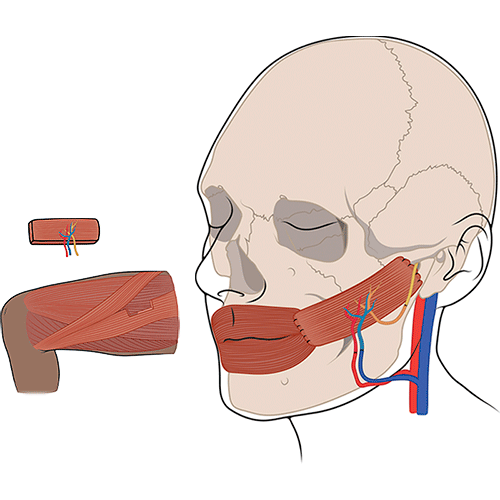Gracilis Muscle Transfer

The gracilis free flap takes a muscle from the leg and transfers it to the face. We reattach both blood and nerve supplies to achieve healthy and desirable movement. This procedure often involves two stages of surgery separated by 6 – 8 months. We perform these surgeries through incisions hidden along the hairline and around the ear similar to a facelift surgery. The first stage of surgery takes a nerve from the side of the leg to attach to a facial nerve on non-paralyzed side of the face. We tunnel this nerve across the face to be primed for the next stage of surgery that is the muscle transfer. For the second surgery, we attach the gracilis muscle to the previously tunneled nerve, as well as a second nerve we use to chew (the masseteric nerve). This provides the mouth muscle with coordinated and strong movement, leading to more facial symmetry. The muscle takes up to 6 months to begin moving and continues to improve with retraining and rehabilitation over the next few years.
Your health is important. Get expert care.
If your facial paralysis symptoms persist and do not improve with conservative treatments, call 216-844-3223 to schedule an in-person consultation with a UH ENT facial plastic surgeon.
Virtual appointments are also available.


